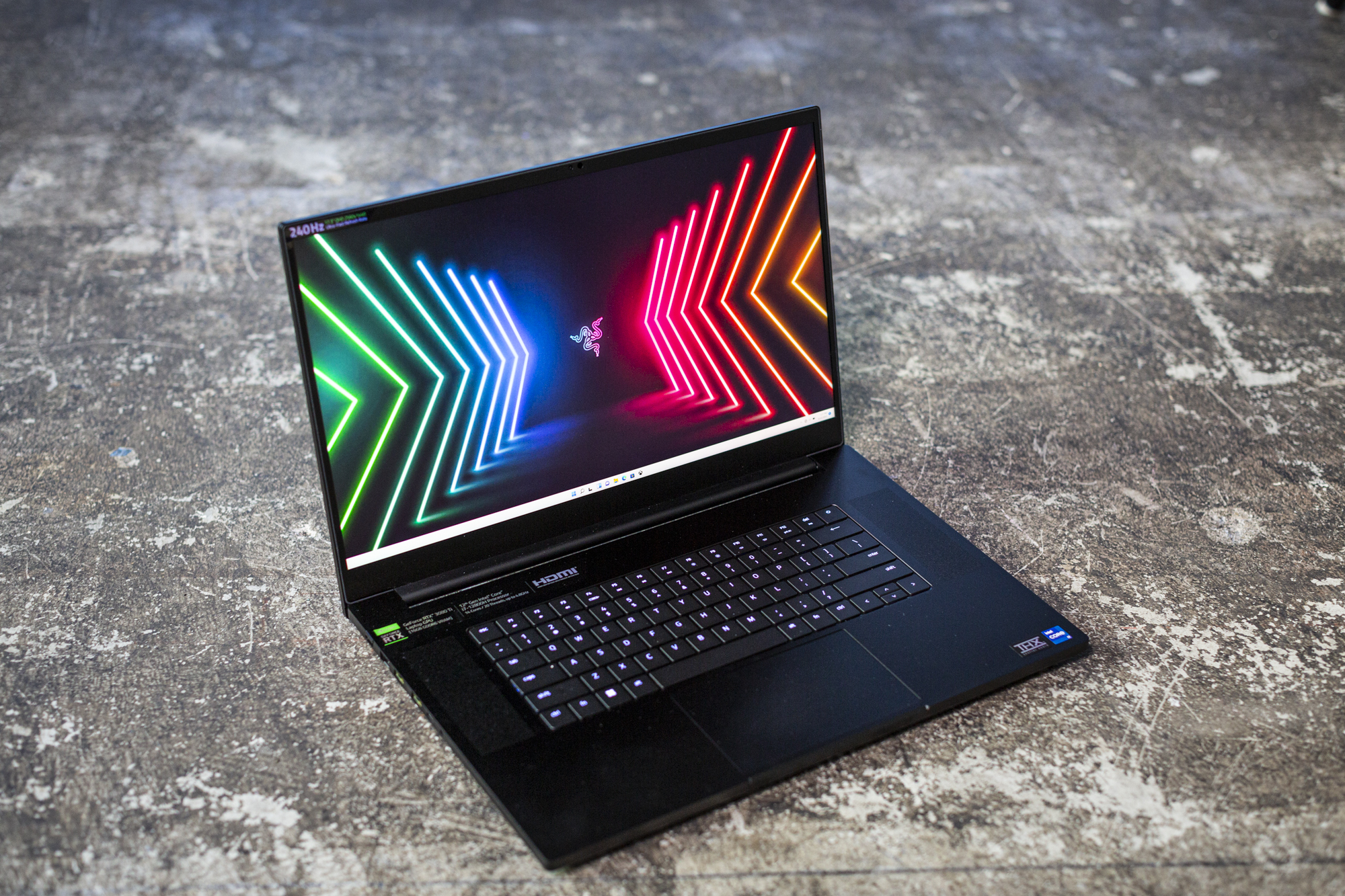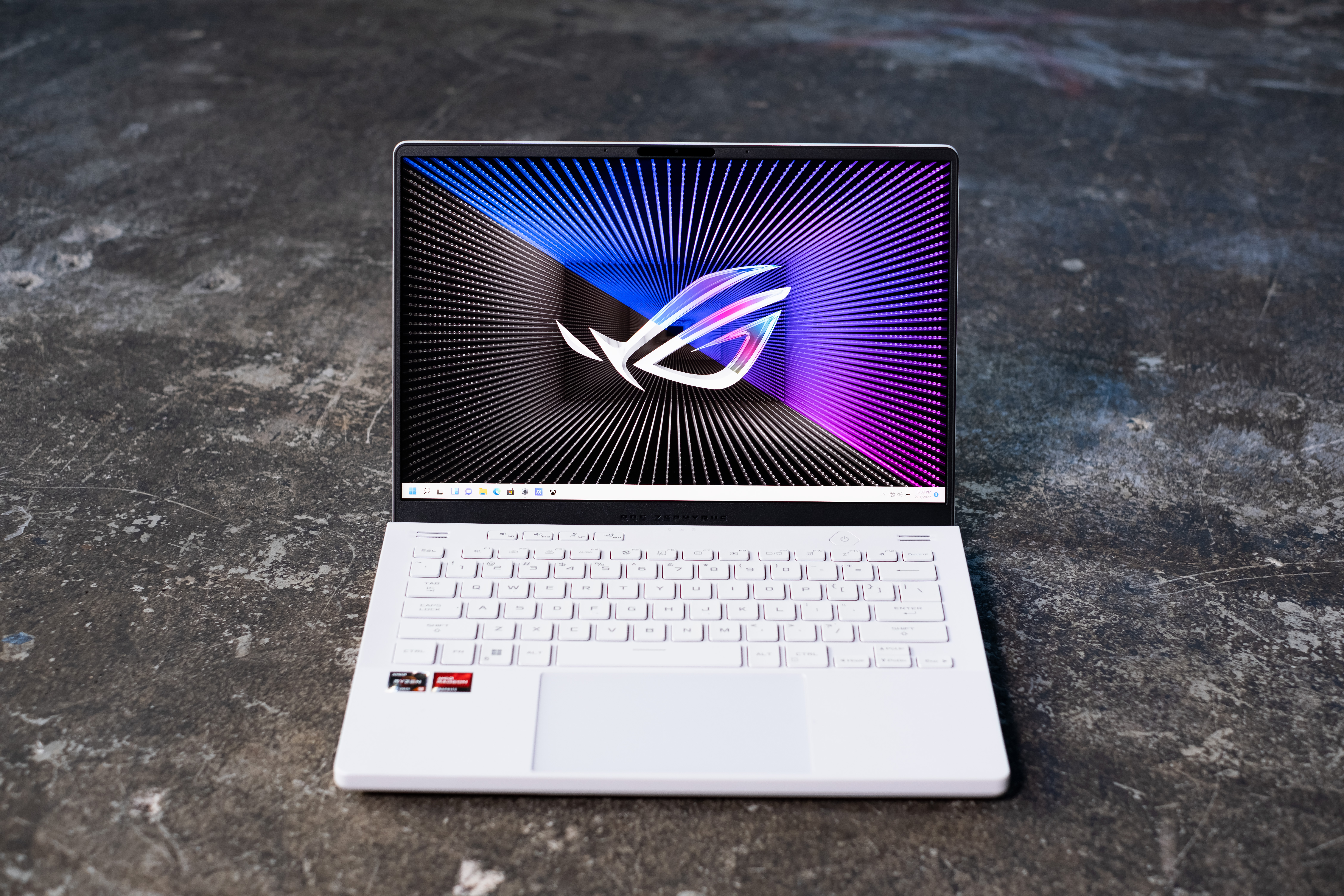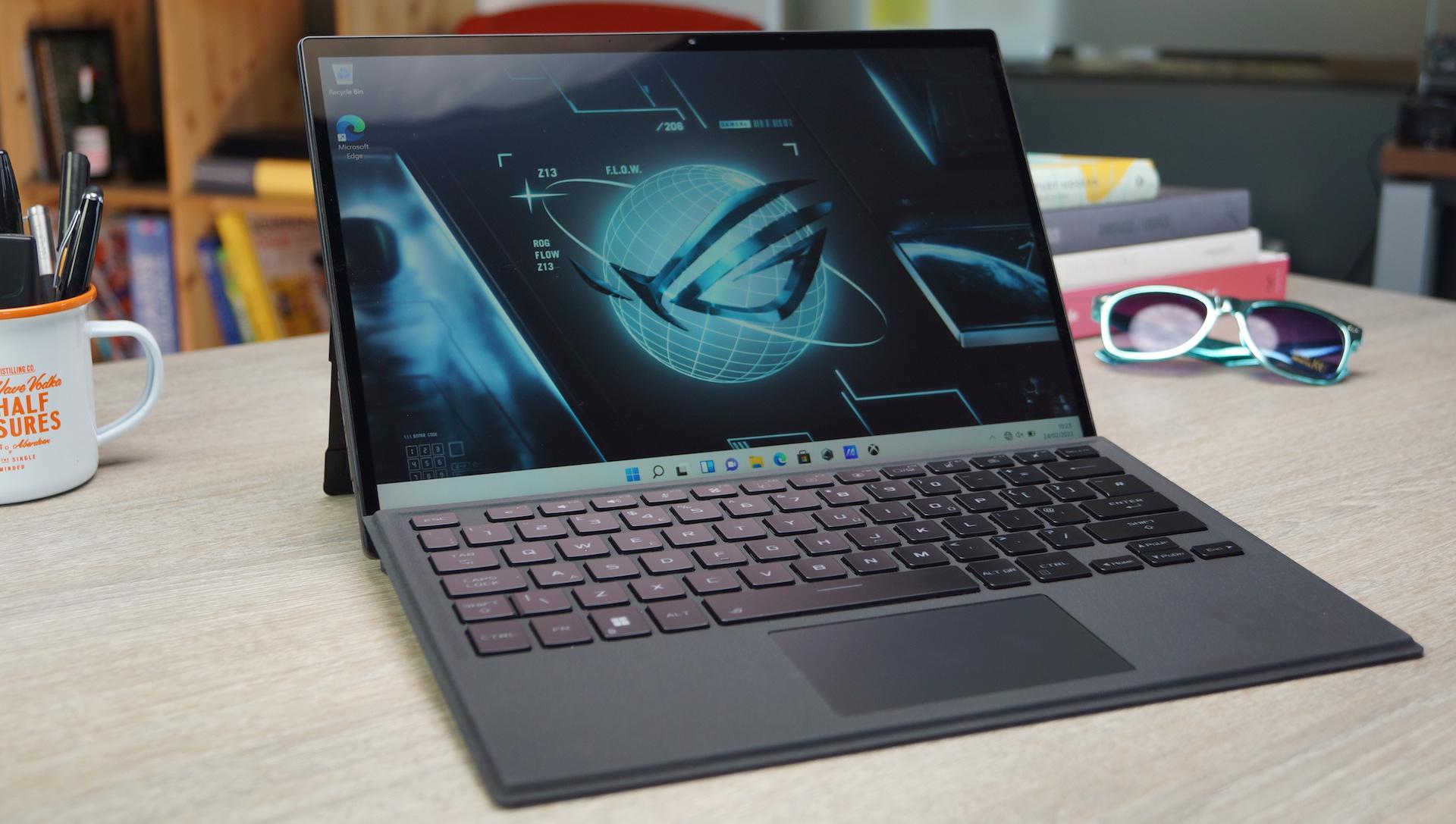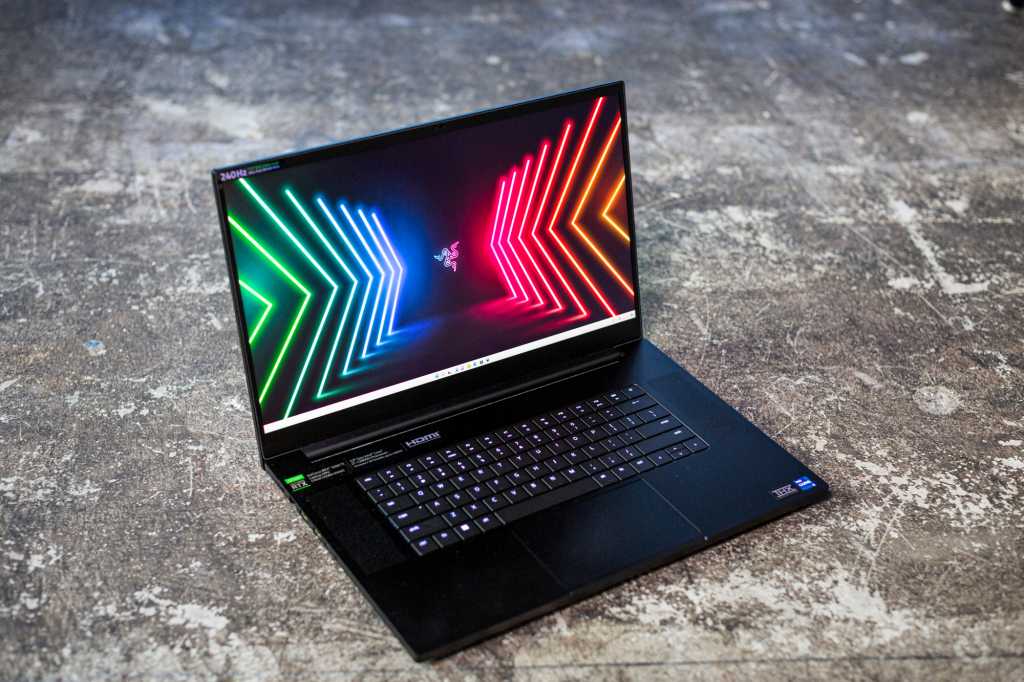Whether you’re capturing those special moments at a wedding or carefully positioning a sleeping newborn for the most precious picture, professional photography takes some serious skill. But taking beautiful photos is only half of the job. Editing those photos can take hours and if you don’t have the proper workstation for it, you’re screwed. That’s where the team at PCWorld swoops in. You’re going to need a laptop with a powerful CPU for those power hungry editing programs, discrete graphics, and a high-resolution display. You’ll also need to take storage and portability into consideration. If you’re not sure where to begin, don’t sweat it. We’ve curated a list of the best laptops for photo editing available today. Read on to learn more.
[Looking for something else? Check out our best laptop roundup for more options]
Asus VivoBook Pro 16X OLED – Best overall
Pros
- Beautiful 4K OLED display
- Long battery life
- Useful DialPad tool
Cons
- Design lacks flair
- Lackluster webcam
If you’re looking for a killer display, the Asus VivoBook Pro 16X OLED is a fantastic choice. The 4K OLED panel is a work of art. Not only does it produce vibrant images, but it’s a solid choice for those who deal with tension headaches from eye strain. If you find yourself spending hours upon hours looking at a screen, you might as well invest in one with a sharp picture. The VivoBook is also powerful when it comes to processing power. Let’s take a look under the hood, shall we?
The Ryzen 9 5900HX CPU is fast enough for photo editing software like Adobe Lightroom and Bridge. As for memory and storage options, it has 32GB of RAM and a whopping 1TB of PCIe NVMe M.2 SSD storage. That’s sufficient enough for quickly firing up multiple applications and storing gigantic RAW images. There are a few flaws to be aware of, though. The webcam is less than stellar and the fingerprint reader is temperamental. Overall, however, the VivoBook Pro is a fabulous machine that any photo editor would love.
Read our full
Asus VivoBook Pro 16X OLED review
MSI GF76 Katana – Best value

Pros
- Decent CPU performance
- Interesting design with plenty of flair
- Comfortable keyboard and trackpad
Cons
- Lackluster GPU performance
- The display lacks brightness
- Audio produces less-than-stellar bass
If you’re on a tight budget (been there), the MSI GF76 Katana is an excellent value pick. It features an Intel Core i7-12700H CPU, an Nvidia GeForce RTX 3050Ti GPU, 16GB of RAM, and 512GB of PCle 4 SSD storage. In other words, this laptop is fast enough to handle most photo-editing work as well as everyday use like browsing the web and streaming Netflix. The trackpad and keyboard are surprisingly comfortable, too.
The only real knock against this machine is the dim display. It’s not horrible, but some photo editors may prefer a brighter screen. That said, it’s 17.3-inches and that’s a ton of screen real estate to work with. If you’re a beginner photo editor looking to save some money, the GF76 Katana is well worth considering.
Read our full
MSI Katana GF76 review
Razer Blade 17 (2022) – Best for power users

Pros
- Excellent gaming performance
- Great selection of ports including 2 x Thunderbolt 4
- Sturdy robust design
Cons
- Poor battery life unplugged
- Keyboard lacks a numpad
The Razer Blade 17 (2022 version) is our top choice for power users. This beastly machine has an Intel Core i7-12800H CPU, 32GB of DDR5 RAM, 1TB of PCIe Gen4 NVMe SSD storage, and a GeForce RTX 3080 Ti GPU. The 17.3-inch QHD display is both rich and vibrant, with a resolution of 2650×1440 and a maximum refresh rate of 240Hz. The Blade has a lot to offer, that’s for sure. However, the biggest caveat is the price.
The Blade costs thousands of dollars. The powerful components may even be bit overkill for beginner photo editors. However, if it’s power you desire and you’re able to shell out the cash, then the Blade is an awesome buy. If you’re looking for more options for both work and play, be sure to check out our roundup of the best gaming laptops.
Read our full
Razer Blade 17 (2022) review
ROG Zephyrus G14 (2022) – Most portable

Pros
- Powerful CPU and GPU performance in a very compact design
- AniMe Matrix screams unique
- It has a webcam
Cons
- Half permanent RAM
- Keyboard backlighting is subpar
MSRP:
$1650 (base price) | $2500 (Radeon RX 6800S, 1TB SSD, 32GB RAM)
If portability is at the top of your priority list, the Asus ROG Zephyrus G15 is a great choice due to its lightweight form factor. It weighs a little over three pounds, which puts it in the ultraportable category. Don’t let the slim profile fool you, though. It’s packing some seriously powerful internals.
The Zephyrus has an Ryzen 9 6900HS processor, 32GB of DDR5 RAM, and 1TB of PCIe 4.0 SSD storage. That’s plenty sufficient for heavy-duty photo editing tasks. However, there are a few tiny nitpicks to be aware of. The keyboard feels too soft and the backlighting is unimpressive. Nitpicks aside, if you’re looking for a compact laptop that delivers blazing-fast performance, the Zephyrus G14 is the way to go.
Read our full
ROG Zephyrus G14 (2022) review
Asus ROG Flow Z13 – Best folio-style laptop

Pros
- Big performance in a small package
- Bright, crisp display
- Compatible with XG Mobile for GPU boost
Cons
- Versatility doesn’t come cheap
- Detachable keyboard poor fit for gamers
The Asus ROG Flow Z13 is one of the more unique picks on this roundup. It’s marketed as a folio-style gaming machine. You can pop open the kickstand on the rear plate and use it like a traditional clamshell. You can even remove the keyboard and use it as a touch-enabled tablet. The versatility of this machine makes it a cool choice for creative work. It has some pretty powerful internals, too.
The Flow is rocking an Intel Core i9-12900H CPU, an Nvidia GeForce RTX 3050 Ti GPU, 16GB of RAM, and 512GB of PCIe NVMe M.2 SSD storage. That’s plenty powerful for editing photos and general-use tasks like checking e-mail and browsing the world wide web. The 1200p IPS touch display is also sharp and colorful. The Flow isn’t a budget-friendly option, though. This kind of versatility and power comes at a big price. However, if you’re able to comfortably stretch your budget, the Flow Z13 is a neat choice.
How we tested
The PCWorld team puts each and every Windows laptop through a series of benchmarks that test GPU and CPU performance, battery life, and so on. The idea is to push the laptop to its limits and then compare it against others we’ve tested. Below, you’ll find a breakdown of each test and the reasons why we run them.
Windows laptops
- PCMark 10: PCMark 10 is how we determine how well the laptop handles general use tasks like web browsing, word processing, spreadsheets, and so on. It’s how we simulate everyday use in a specific time frame.
- HandBrake: HandBrake is more intensive than PCMark 10. It measures how long a laptop’s CPU takes to encode a beefy 30GB file. This is more like a stress test.
- Cinebench: Cinebench is a brief stress test of the CPU cores. It does this by rendering a 2D scene over a short period of time. This benchmark shows us how well the CPU splits the workload.
- 3DMark: 3DMark checks if 3D performance remains consistent over time by running graphic-intensive clips. These benchmarks are used on gaming laptops.
- Video rundown test: To gauge battery life, we loop a 4K video using Windows 10’s Movies & TV app until the laptop dies. If you’re a regular traveler, you’ll want a battery that can last longer than a full work day.
Laptops for photo editing FAQ
There’s a lot to consider when it comes to laptops for photo editing. For one, a powerful processor is absolutely necessary. This will keep things quick and responsive as you’re editing images. Screen resolution is another one, as you’ll want to work off of a panel that’s both crisp and color-accurate. You’ll also need to keep RAM, storage, and graphics in mind. If it sounds too overwhelming to process, don’t worry. We’ll help break it down for you.
How much processing power will I need?
For most photo editing work, an Intel Core i5 or i7 processor is fine. Need more oomph? Go for an Intel Core i9. The most important thing is the number of cores. The more cores, the better your CPU can divide the workload. For AMD options, the Ryzen 5 series is zippy enough for basic photo editing work. If you need faster response times, shoot for a Ryzen 9.
Do I need a discrete graphics card?
It’s not absolutely necessary, but it will make a difference when using photo editing applications. If you want super-fast performance, go with a laptop with that has a dedicated graphics card. For those on a strict budget, go for an Nvidia RTX 3060 or 3050 Ti. For a serious boost in graphics performance, aim for an Nvidia RTX 3080 Ti or a AMD Radeon RX6800S.
What about memory?
RAM will keep your laptop running nice and smooth as you edit those darling baby photos. We’d recommend 8GB of RAM as the minimum. For bigger projects, go for 16GB.
Should I spring for a hard disk drive or an SSD?
RAW image files are massive, so you’re going to need a high-capacity SSD, as solid-state drives are faster and quieter than hard disk drives. 256GB is the minimum amount we’d recommend, but more is obviously better. For really big projects, go for 512GB or 1TB.
Does screen quality matter?
We’d argue that screen quality is one of the most important aspects of a laptop, especially for photo editing work. Don’t settle for anything less than 1080p resolution. That’s your baseline. If you can spend a little more, 4K is best for detailed creative work and OLED tends to be more color accurate.
What about portability?
Do you often take your work to a coffee shop? If so, you’ll want a laptop with a 13- or 14-inch display, as it’s smaller and more portable. Anything that weighs around three pounds or less is considered an ultraportable. That’s the golden number you want to hit.
How long should my laptop last on a single charge?
If you plan on taking your laptop everywhere with you, 10 to 12 hours on a single charge is the sweet spot. That’s more than a full work day. However, know that battery size impacts the portability of the machine. The bigger the battery, the heavier the laptop.

